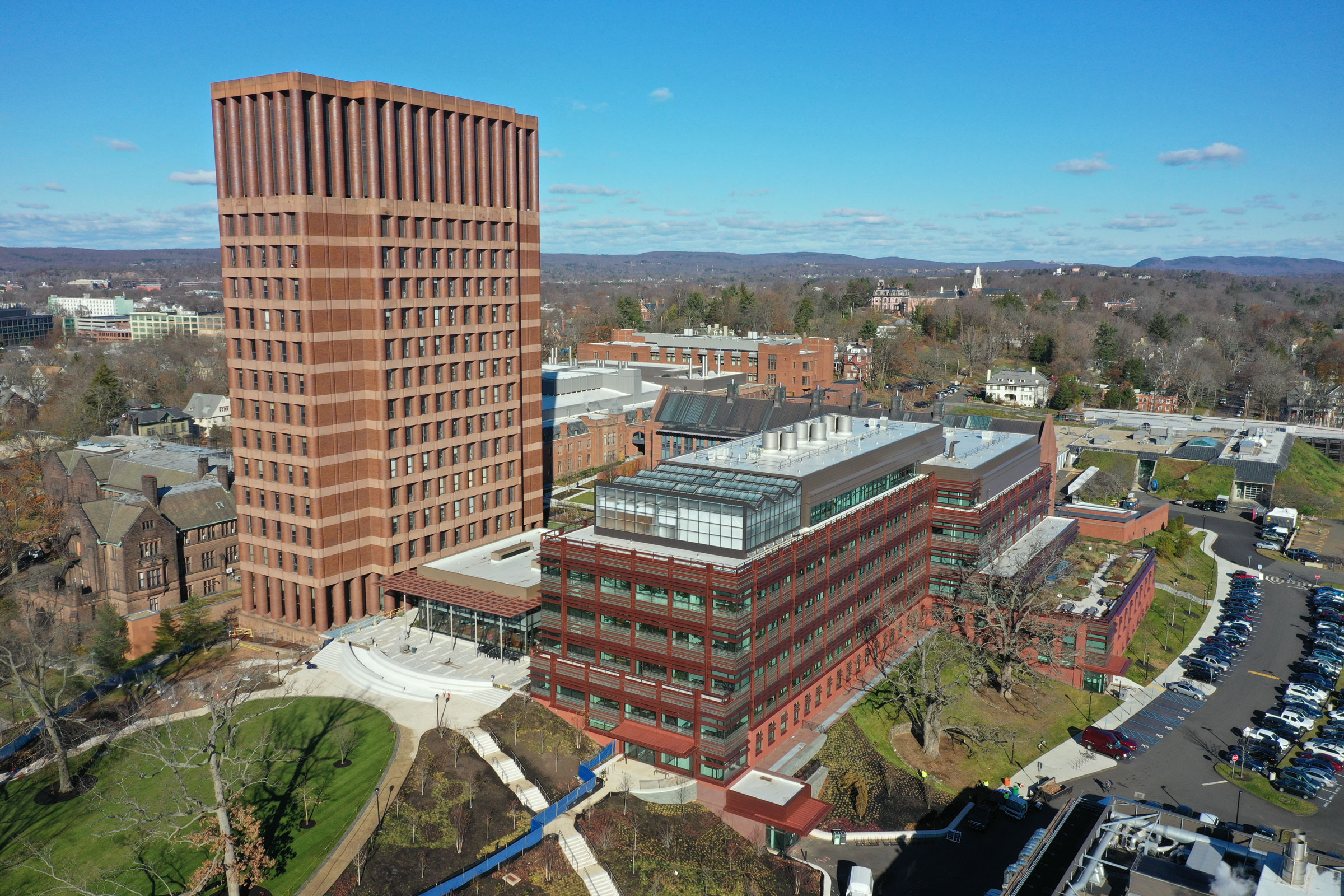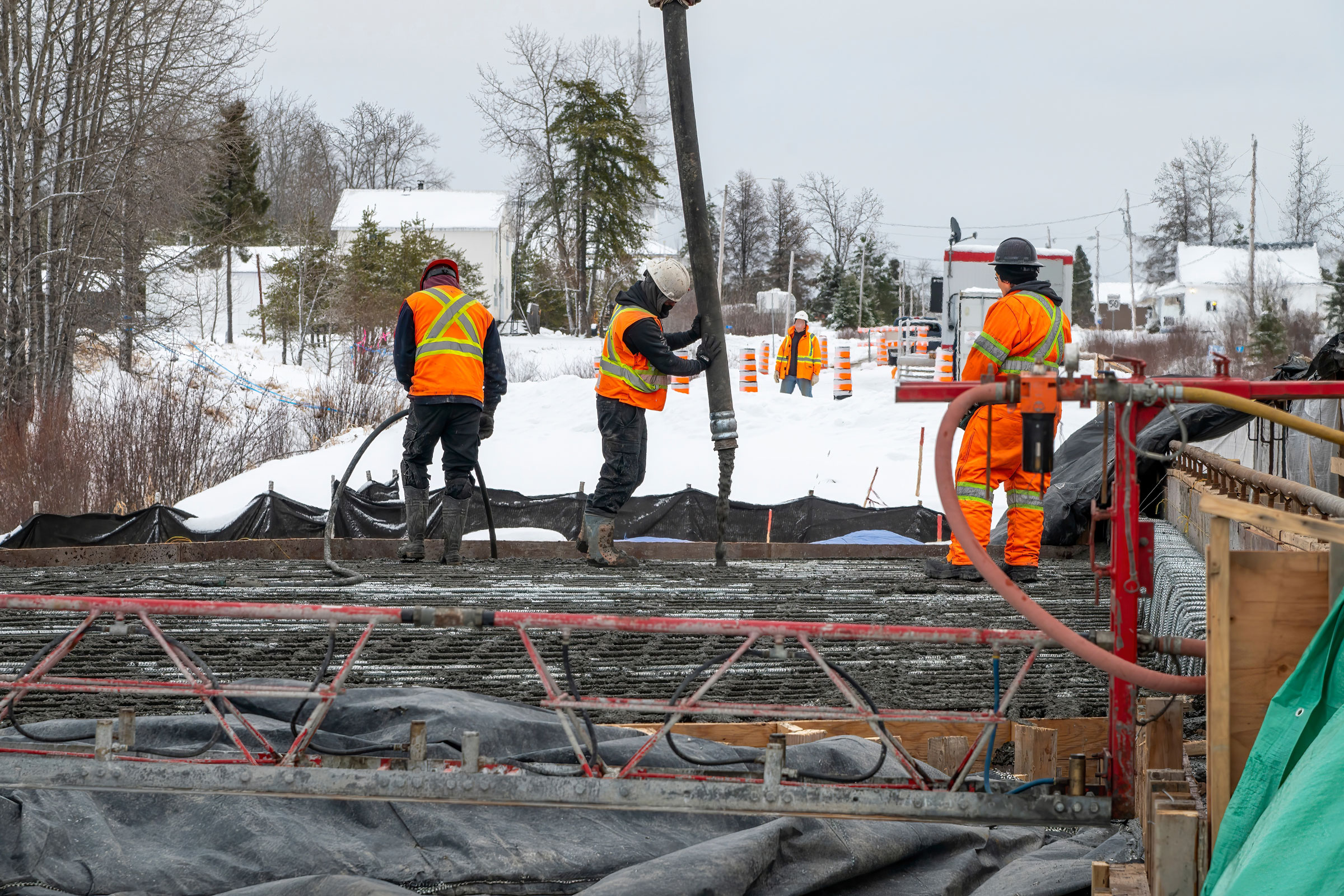Story at a glance:
- Since 2010 Yale has integrated sustainable design requirements, including that all projects must meet LEED Gold or higher, into Yale Design Standards.
- The Yale Sustainability Plan 2025 has its sights set on carbon neutrality, with the goal to achieve carbon neutrality by or before 2050.
- A project for the Yale Divinity School is expected to be the world’s largest Living Building Challenge project, which will produce zero waste.
Sustainable design is a core commitment of Yale, who established sustainable design requirements in 2010 for all of its projects—from small renovations to large new construction. Among these requirements, it was agreed that all comprehensive new construction and renovation project designs must meet LEED Gold status or higher.
“As we learn more about embodied carbon, healthy materials, and the increasing need for high-performance buildings that reduce energy consumption and greenhouse gas emissions, we update our standards and sustainability ambitions,” says Ginger Chapman, director of the office of sustainability at Yale.
Buildings account for 40% of global energy use and 25% of water consumption, according to the United Nations Environment Programme (UNEP). The built environment already accounts for one-third of greenhouse gas emissions, the UNEP estimates, even as urbanization accelerates all over the world.
Before 2010 Yale experimented with applying LEED standards to achieve various sustainable attributes across building projects, but in 2010 the sustainable design requirements were integrated into Yale Design Standards. As of 2020 Yale had completed 23 LEED Gold, three LEED Platinum, and two LEED Silver building projects. Currently one project is targeting LEED Platinum and 13 more are targeting LEED Gold.
Chapman says the pandemic has furthered Yale’s desire to commit to green building and push the envelope in a way that’s measurable. “We are working on a new standard to ensure resilience is part of all of our construction and renovation projects in a way that we can measure and track,” she says.
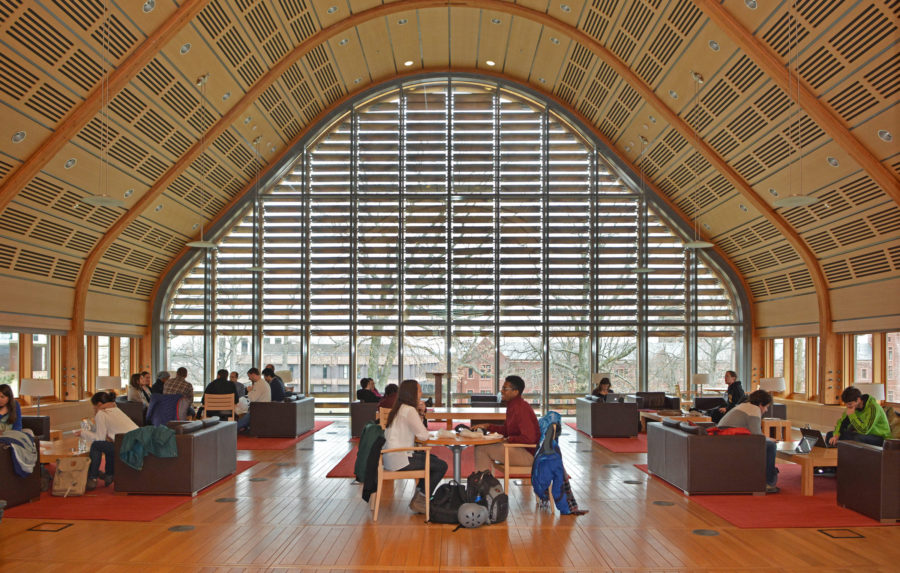
Kroon Hall. Photo by Michael Marsland
Yale has developed a sustainability plan that’s broken into nine “ambitions” intended to be aspirational but achievable by 2025. These are in areas like health and well-being, climate action, built environment, and materials, among others, which are further broken down into 20 objectives and 38 goals.
From developing national rankings for resource use to improving air quality in rural developing country homes, Yale has already accomplished many of its sustainable goals toward a greener world. Yale committed in 2005 to reduce its GHG emissions by 43% by 2020. As part of the Yale Sustainability Plan 2025, Yale committed to achieve carbon neutrality by or before 2050. “We met the target in 2020 and are now in the process of setting the next interim targets over the next 29 years,” Chapman says. “Yale sets required EUIs for each project that exceed the energy requirements of LEED standards as part of the campus-wide effort to reduce emissions.”
From campus buildings and grounds to transportation, food, and energy, Yale is working to make a better environment while improving the health of people on-campus as part of its health and well-being initiative. Studies around biophilic design have long proven that experiences with nature can improve the mental and physical well-being of individuals, and green spaces can build community. The EPA reports that the average American spends nearly 90% of his or her lifetime indoors.
Yale is committed to high standards for all new construction and renovations to ensure healthy living and working environments for building occupants. In addition to energy and water efficiency, this includes access to natural light and use of nontoxic materials. “We have a disclosure requirement for materials that have Red List ingredients so we can opt for those without, and our furniture standards specifically address chemicals of concern. We continue to investigate standards for healthy building materials,” Chapman says.
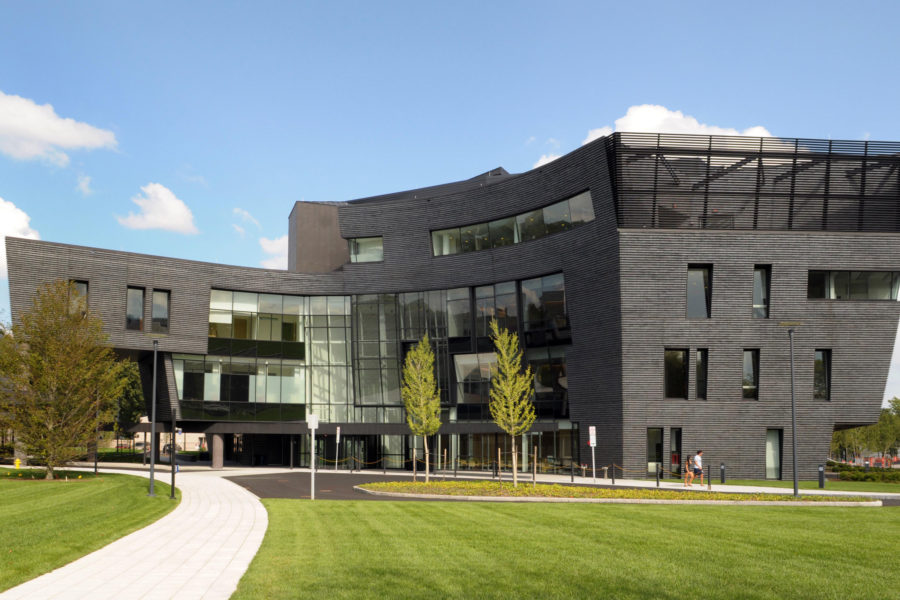
The Yale Health Center. Photo by Michael Marsland
Indoor air quality is also of top concern in Yale’s sustainability planning. “IAQ is crucial to the health and well-being of building occupants,” Chapman says. “Our standards ensure the use of materials with low VOCs, nontoxic materials, healthy furniture, and appropriate air changes and filtration.”
But work isn’t just happening by Yale leadership. Yale encourages broad behavioral change among students, staff, faculty, and visitors—all in an effort to make a positive impact on the environment. A series of learning modules for building occupants are aimed at increasing awareness and empowering sustainable behavior.
Students at Yale are getting hands-on experience in green building, too. First-year students in the Yale School of Architecture design and build a structure as part of their graduate education. The program is required for all students in the department, and the class results in the construction of an affordable and efficient single-family home in a low-income neighborhood.
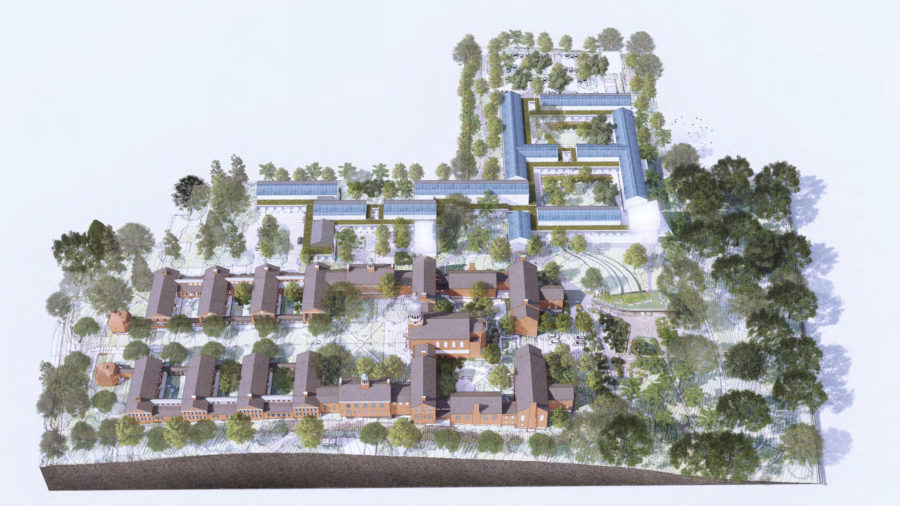
The Yale Divinity School is expected to be the largest academic Living Building Challenge project. Courtesy of Yale
As for a few of the many other green projects on-campus, the Yale Science Building opened in 2019 with an energy use intensity target of 200 KBTU—half of what comparable lab spaces on-campus consume, Chapman says. The Yale Science Building was designed to meet LEED Gold (certification pending) standards and includes high-performance air distribution, heat recovery, and lighting systems. It also has a rooftop greenhouse.
A project planned for the Yale Divinity School is expected to be the world’s largest academic Living Building Challenge (LBC) project when it’s completed. It will produce zero waste, using only the water that falls on the site and capturing all the energy it needs from the sun. It will become an international model for sustainable living, especially on college and university campuses. The 127,000-square-foot Living Village will house 155 students at the Divinity School at below-market rental rates, helping enhance the spirit of community at YDS while providing financial relief for students.

